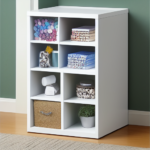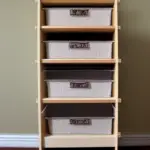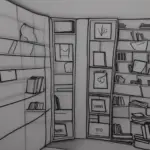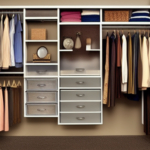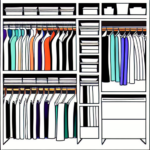Sorting documents into three piles
One of the easiest ways to deal with paper clutter is to sort them into piles based on their types and usage. Action documents are those you need to act on, such as invitations and reminders. Archive documents are those that you don’t need to access often. Finally, household documents are those that keep your home functioning.
Sorting documents into piles is an easy way to organize a home office. You can use old file folders to organize your papers. The process is called bucketizing. As long as the file is named appropriately, you can put it in the appropriate pile. Then, you can recycle as much of the paper as possible. This way, you can keep your office clutter to a minimum. It’s not complicated and will save you time.
Stacking plastic bins
Plastic bins are an excellent option for storing papers, books, and other items. They come in various shapes and sizes and some are designed for specific types of items. For example, shallow storage drawers are made for small items, while rectangular storage bins are better for large items. Some bins have lids that can be locked in place, while others have open tops that make it easier to see inside.
Choosing the right storage bin can make a big difference in the appearance of a room. Plastic milk crates, for example, are heavy-duty and can hold a lot of stuff. However, they have a tendency to collect dust because of the holes in them and are difficult to clean. If you want to avoid these problems, try using wicker bins, but be aware that wicker can break under too much pressure.
Using vertical space
Using vertical space for organizing papers at home is a great way to maximize storage and visibility. As an added bonus, this method is safer than stacking and allows you to easily access items. Watch the Clutter Diet tips video to learn how to use vertical space to store your papers.
Using a filing system
Using a filing system for papers at home can be a great way to get a clearer picture of what needs to be filed and where. Once all your documents are in one place, it’s easier to identify the categories and subcategories they fall under. To get started, grab a few post-it notes and go through each document in your “file” pile. Write down the first thing you think about the document, and stick it to its appropriate folder.
Using a filing system will help you reduce the amount of paperwork in your home. It also allows you to recycle or shred documents that are no longer relevant. You can also place a recycling bin or a dedicated basket near your desk to collect all your discarded documents. Regular document disposal will help keep your workspace clean and prevent buildups that can create fire and trip hazards. You can also color-code documents by type using the features on your operating system.
If you aren’t sure what type of filing system to use for your home, consider a combination of filing systems. Most household paperwork falls into some common categories. For instance, you may want to organize documents by topic and keep the ones you review most frequently in an open-topped filing box. Using a filing system will streamline the filing process and make it easier for you to find the documents you need.
Once you have an organized home filing system, it will take a huge weight off your shoulders and allow you to access important documents quickly. You can start by downloading a free version of The Organized Mom’s Household Binder, which helps you streamline the papers you need to sort out around the house. You’ll be surprised at how much time and brain space you will free up for other activities.
Using color coding
Color-coding is a great way to organize your home office. People often have associations with specific colors, and you can use the color scheme to identify important documents quickly. You’ll also have fewer misplaced folders and less filing frustration. Color-coding is also a great way to keep track of your supplies, such as office supplies.
Color-coding can be especially helpful for students who are disorganized, or just need to organize their space. It’s easy to identify notes based on color and separate them accordingly. It’s also a great way to create focus in your work space. In school, students can use color-coded folders for homework assignments and notes. Similarly, you can use highlighters and stickers to organize your notes.
Color-coding can be implemented in an existing environment or a new one. Using colored binders, file folders, and labels are a great way to implement this method. You can also use paint chips or stickers for easy identification. When you’re done, you won’t have to guess about what you’re looking for again.
Color-coding is also helpful in keeping track of important events in your life. Whether it’s a family event or a social gathering, having paper documents color-coded will help you stay on track. You can even color-code your wall calendar. This way, you’ll never miss a meeting or outing.
When it comes to organizing your papers at home, the colors that you use should match. For instance, green papers are for finances while blue ones are for medical items. Red papers are for emergencies. The same principle can be applied to your e-mail, bullet journal, and calendar. It’s important to keep everything consistent across all applications.





